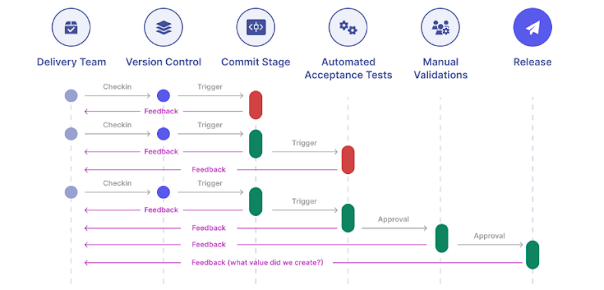In today's competitive software development landscape, automation has become an indispensable tool for ensuring quality, efficiency, and speed. By automating repetitive tasks and tests, teams can free up valuable time and resources to focus on innovation and delivering value to customers. However, approaching automation effectively requires careful planning, collaboration, and strategic implementation. This guide will delve into the key aspects of automation, providing insights and best practices to help you navigate the process successfully.
Building a Collaborative Foundation
Effective automation starts with getting the whole team involved. This includes developers, testers, and business stakeholders, each bringing their unique perspectives and expertise to the table. By fostering a collaborative environment, you can ensure that everyone is aligned on the goals and objectives of automation.
Start by creating a shared vision for the automation test suite. This involves brainstorming the desired qualities of the suite, considering aspects like test types, tools, and ownership. Utilize models like the testing quadrants and test pyramid to guide discussions and ensure agreement on the overall strategy.
Regular retrospectives are crucial for maintaining momentum and addressing any challenges that may arise. These sessions provide an opportunity to reflect on what's working well and identify areas for improvement.
Key Points:
- Get the whole team involved: QA team, developers, testers, and business stakeholders.
- Create a shared vision for the automation test suite.
- Hold regular retrospectives to address challenges and improve the process.
- Promote a culture of shared ownership for automation scripts and test results.
- This collaborative approach improves communication, problem-solving, and overall test quality.
Defining a Clear Strategy
Before diving into test creation, it's essential to develop a well-defined strategy. This involves identifying the highest priority features and determining which scenarios are best suited for automation. Consider factors such as impact, manual effort, and consistency of results.
Focus on automating tests that align with the principles of the test pyramid, aiming for a higher proportion of unit tests and a smaller number of UI tests. This approach ensures a well-tested application with timely feedback.
Key Points:
- Identify the highest priority features and scenarios for automation.
- Consider the impact, manual effort, and consistency of results.
- Aim for a higher proportion of unit tests and a smaller number of UI tests.
Selecting the Right Tools
Once the strategy is in place, it's time to choose the appropriate tools. While frameworks exist for different types of tests, finding the ideal solution for your team's needs requires careful consideration. Start by defining baseline requirements, such as the type of test and the programming language.
Evaluate potential tools through small experiments, known as spikes. These experiments allow team members to gain hands-on experience and make informed decisions based on the tool's technical details and advantages/disadvantages.
- Choose tools that meet your team's specific needs and requirements.
- Conduct spikes to evaluate potential tools and make informed decisions.
- Consider factors like ease of use, scalability, and integration with existing systems
Integrating Automation into Development Processes
Automation should be seamlessly integrated into the software development life cycle. Ideally, unit and integration tests are written during development, while UI tests can start once the feature is complete.
Continuous integration ensures that tests are run frequently and remain green, providing confidence in the application's stability.
- Write unit and integration tests during development.
- Start UI tests once the feature is complete.
- Use continuous integration to ensure tests are run frequently and remain green.
Embracing Design Patterns
Following established design patterns can significantly improve the maintainability and consistency of your automation scripts. Key principles include DRY (Don't Repeat Yourself) to avoid duplication and using a Domain-Specific Language (DSL) for clear and concise communication.
Each test should have a single purpose, be independent of other tests, and be composed of steps with technical details defined in separate functions.
Key Points:
- Follow established design patterns for better maintainability and consistency.
- Use a Domain-Specific Language (DSL) for clear and concise communication.
- Make each test independent and self-contained.
Continuously Learning and Adapting Your Automation Approach
- Stay up-to-date with the latest tools, techniques, and best practices: The automation landscape is constantly changing, with new tools and techniques emerging regularly. Make it a habit to stay informed about the latest advancements through industry publications, conferences, and online resources.
- Be prepared to adjust your approach as your team's needs and the technology landscape evolve: As your team's skills and experience grow, and the technology landscape changes, your automation needs will inevitably evolve as well. Be prepared to adapt your approach by exploring new tools, techniques, and frameworks that better align with your current requirements.
- Embrace a growth mindset: Encourage a culture of continuous learning within your team. Foster an environment where experimentation, exploration, and knowledge sharing are valued. This will empower your team to stay adaptable and enthusiastically embrace new challenges.
- Seek feedback and iterate: Regularly solicit feedback from your team members and stakeholders on the effectiveness of your automation approach. Use this feedback to identify areas for improvement and continuously refine your processes.
- Celebrate successes and share lessons learned: Recognizing and celebrating successes is crucial for maintaining motivation and fostering a positive learning environment. Share your learnings and experiences with others to contribute to the collective knowledge base and inspire further innovation.
Conclusion
Approaching automation strategically and collaboratively is key to unlocking its full potential. By involving the entire team, defining a clear strategy, selecting the right tools, integrating automation into development processes, and embracing design patterns, you can create a robust and sustainable automation framework that drives efficiency, quality, and innovation.









0 Comments
Post a Comment